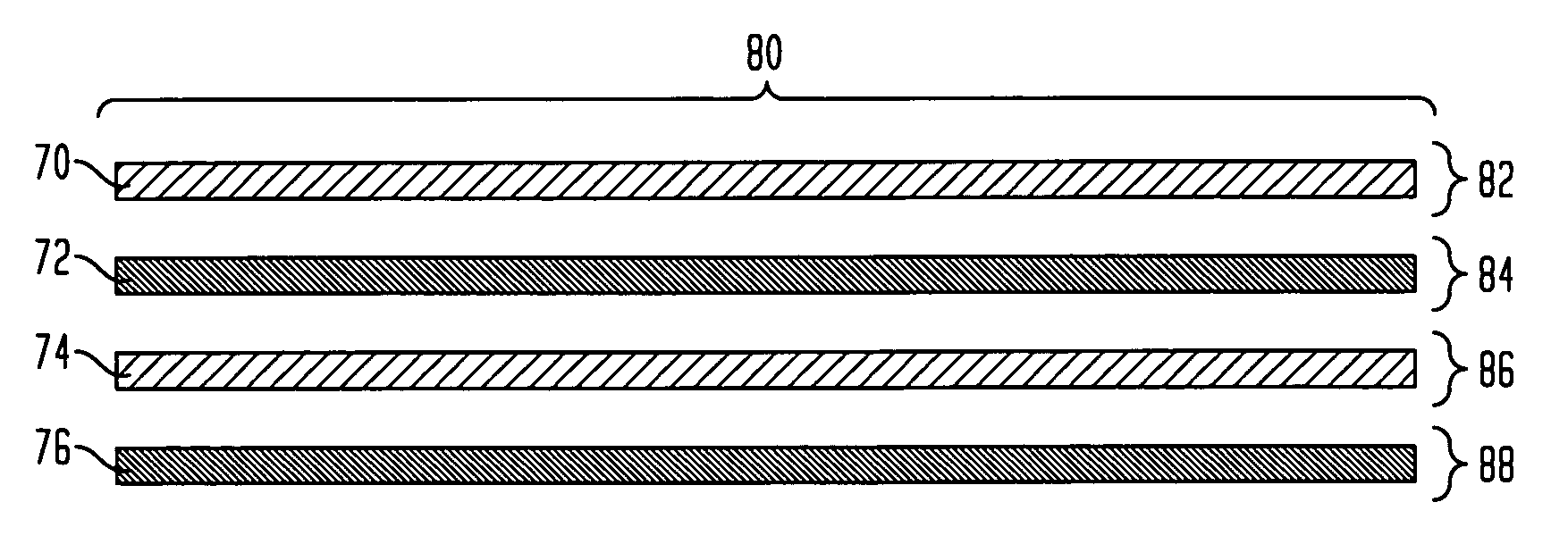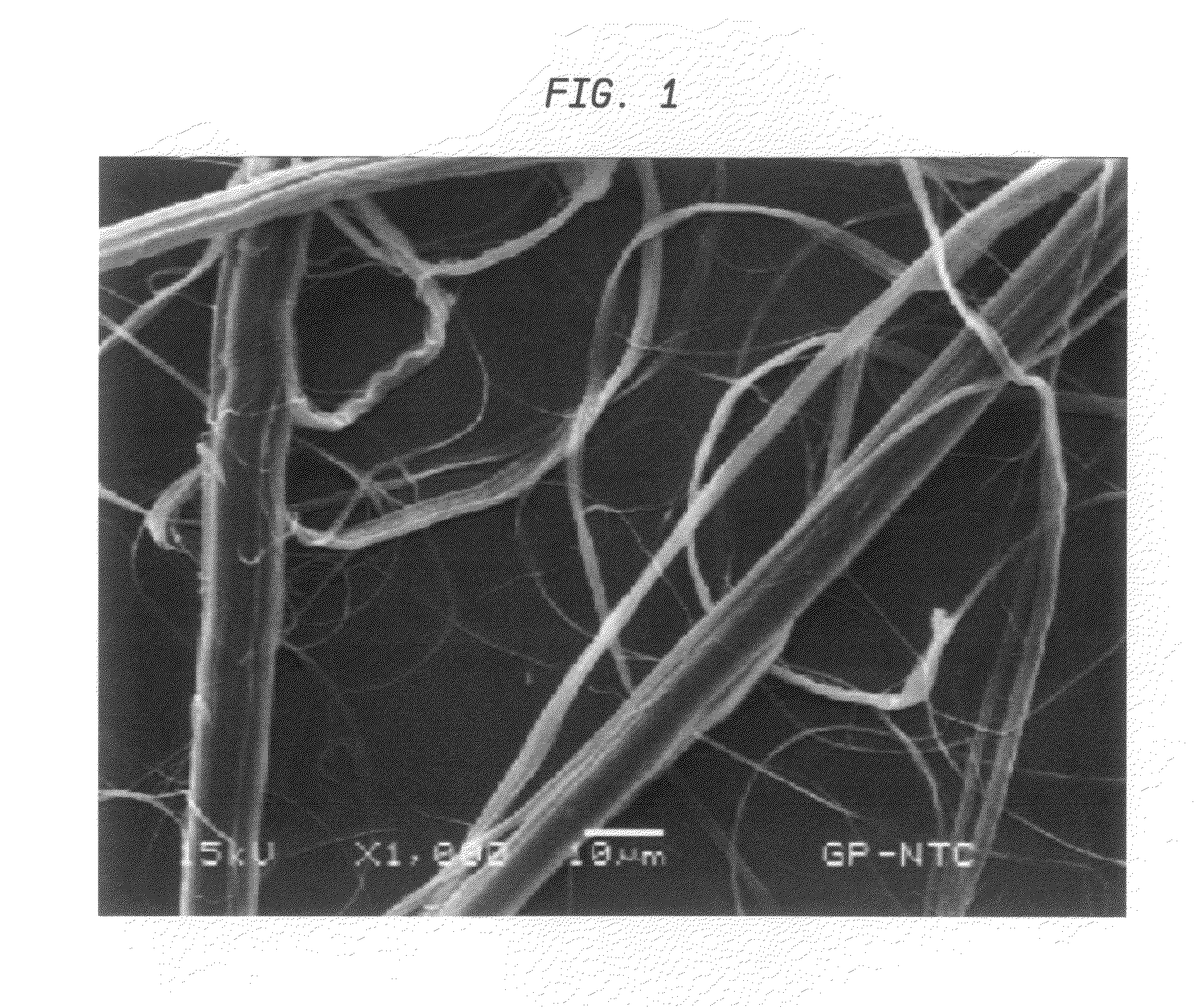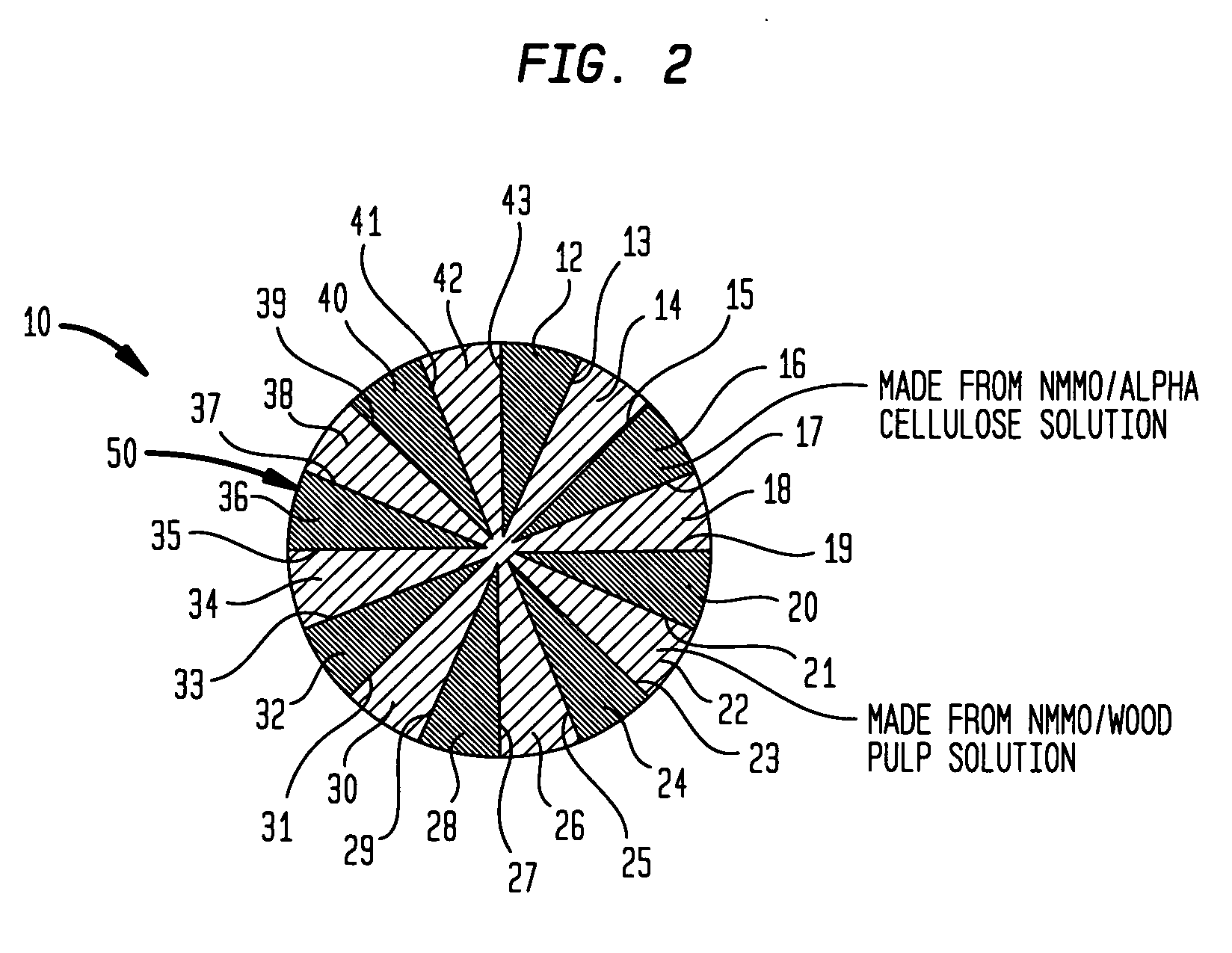Method of making regenerated cellulose microfibers and absorbent products incorporating same
- Summary
- Abstract
- Description
- Claims
- Application Information
AI Technical Summary
Benefits of technology
Problems solved by technology
Method used
Image
Examples
Embodiment Construction
[0026]The invention is described in detail below with reference to several embodiments. Such discussion is for purposes of illustration only.
[0027]Terminology used herein is given its ordinary meaning consistent with the exemplary definitions set forth immediately below; mg refers to milligrams and m2 refers to square meters, mBar means milliBar ( 1 / 1000 Bar) and so forth. Unless otherwise specified, % means weight percent.
[0028]Unless otherwise specified, “basis weight”, BWT, bwt and so forth refers to the weight of a 3000 square foot ream of product.
[0029]The term “cellulosic”, “cellulosic sheet” and the like is meant to include any product incorporating papermaking fiber having cellulose as a major constituent. “Papermaking fibers” include virgin pulps or recycle (secondary) cellulosic fibers or fiber mixes comprising cellulosic fibers. Fibers suitable for making the webs when mixed with microfibers of this invention include: nonwood fibers, such as cotton fibers or cotton deriva...
PUM
| Property | Measurement | Unit |
|---|---|---|
| Fraction | aaaaa | aaaaa |
| Fraction | aaaaa | aaaaa |
| Fraction | aaaaa | aaaaa |
Abstract
Description
Claims
Application Information
 Login to View More
Login to View More - R&D
- Intellectual Property
- Life Sciences
- Materials
- Tech Scout
- Unparalleled Data Quality
- Higher Quality Content
- 60% Fewer Hallucinations
Browse by: Latest US Patents, China's latest patents, Technical Efficacy Thesaurus, Application Domain, Technology Topic, Popular Technical Reports.
© 2025 PatSnap. All rights reserved.Legal|Privacy policy|Modern Slavery Act Transparency Statement|Sitemap|About US| Contact US: help@patsnap.com



